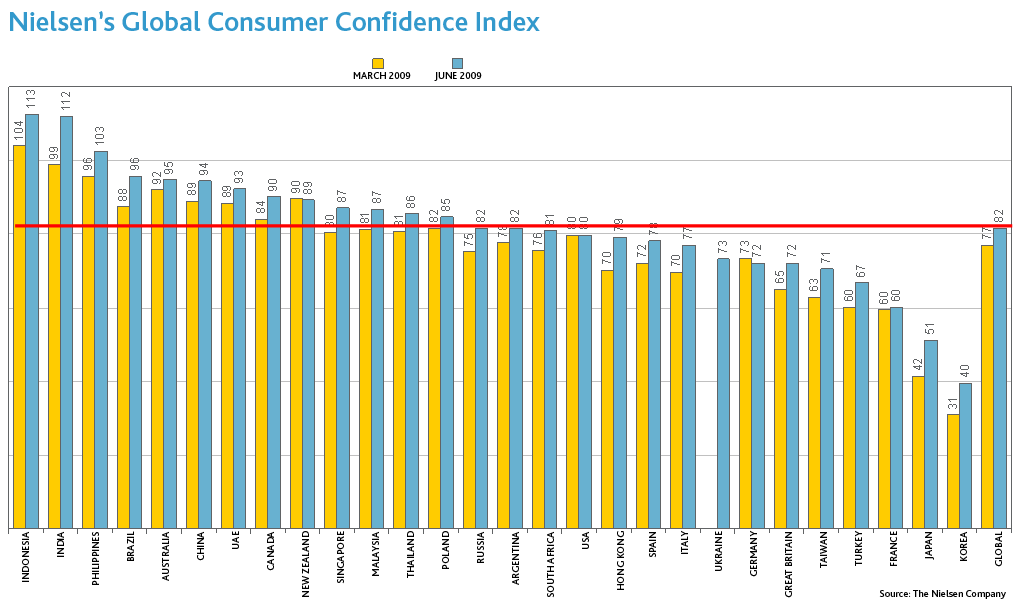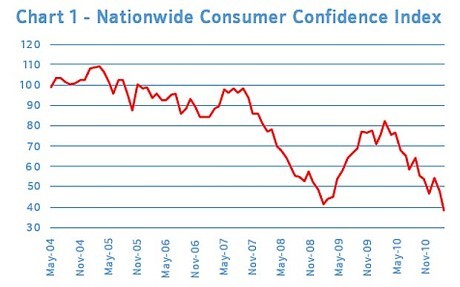Understanding the Consumer Confidence Index
Post on: 16 Март, 2015 No Comment

There are a myriad of technical and fundamental indicators to consider when trading penny stocks or any other type of investment vehicle. From moving averages and Fibonacci retracements to unemployment reports and GDP figures, there are endless places to turn for market analysis. However, an important and often misunderstood fundamental indicator that can help penny stock investors gauge future stock performance is the Consumer Confidence Index, or CCI.
Consumer Confidence Index Unveiled
Measured by the CCI, consumer confidence is defined as the level of optimism consumers have on the state of the economy. The CCI is managed and published by the Consumer Confidence Board. and it was first developed in 1985. The CCB arbitrarily decided to set the index at 100. The value is adjusted every month and is based upon the results of a monthly household survey that gathers consumer’s opinions on current economic conditions and future expectations. 60 percent of the index is comprised of expectations for future economic conditions, and current economic conditions make up the other 40 percent.
When consumer confidence is trending upward, consumers tend to spend their money, which indicates a strong economy. When confidence is trending downward, consumers typically save more than they spend, which is a sign that the economy is in trouble. The more confidence people have in their financial stability, the more likely they are to spend their money, driving up stock prices for a number of emerging penny stock companies.
The Consumer Confidence Survey
Since 1985, the Consumer Confidence Board has surveyed 5,000 households each month, asking them five questions to get their opinions on the following:
• Current employment conditions
• Employment conditions over the next six months
• Current business conditions
• Business conditions over the next six months
• Family income over the next six months
Participants must answer each question with a “negative,” “positive,” or “neutral” opinion. The Consumer Confidence Board releases the results of the survey at 10am EST on the last Tuesday of every month.
How Consumer Confidence Data is Used
The US government, banks, manufacturers, and retailers constantly monitor the CCI for changes that may affect their decision-making processes. Changes of less than five percent in the index are often considered inconsequential, but any monthly changes of five percent or more often signal an economic shift. A downward trend over numerous months means consumers have a negative economic outlook and lack confidence in their employment opportunities. Thus, manufacturers will expect a decline in retail purchases and scale down their inventories or delay new projects. At the same time, banks may anticipate decreased lending activity, credit card use, and mortgage applications.
When in the midst of a downward-trending CCI, the government has a bevy of available options, such as issuing economic stimulus packages or tax rebates. Conversely, a rising consumer confidence trend indicates a healthy or improving economy with increased consumer purchasing power. Manufacturers may ramp up production, banks can expect more credit applications, builders can prepare for an uptick in construction projects, and the US government can anticipate more tax revenues due to increased consumer spending.

The Lagging Perspective
Next time you observe the results of the latest Consumer Confidence Survey, bear in mind that it is considered a lagging indicator, which means it only reacts to economic changes that have already taken place. However, a lagging indicator is important because it provides a confirmation that a pattern exists. So, increased consumer spending today may be a reflection of an economy that recovered a few months prior. On the other hand, a noticeable decrease in consumer spending today may provide confirmation of an ongoing economic recession.
What the CCI Means for Investors
A positive CCI has the potential to move markets, because investors are more likely to purchase equities. Essentially, a positive and happy consumer will feel they are benefiting from an improved standard of living and make larger purchases, such as a new home or a new car.
Due to its small sample size and subjective nature, however, many economists also look at three to six month moving averages of CCI figures before they predict a major shift in economic sentiment. Many also feel that a CCI change of at least five points is necessary before calling for a trend reversal. Generally speaking, a rising CCI will trend reasonably in line with increased retail sales.
Investors can also view regional data breakdowns that can allow them to see consumer sentiment in different areas of the country, which can be tremendously useful when determining a multitude of investment opportunities, such as penny stocks related to the real estate market.
Since the financial health of the nation is directly tied to consumer spending, the Consumer Confidence Index is an accurate and closely monitored economic indicator, helping penny stock investors and investors of other securities choose profitable investment opportunities for nearly 30 years.














